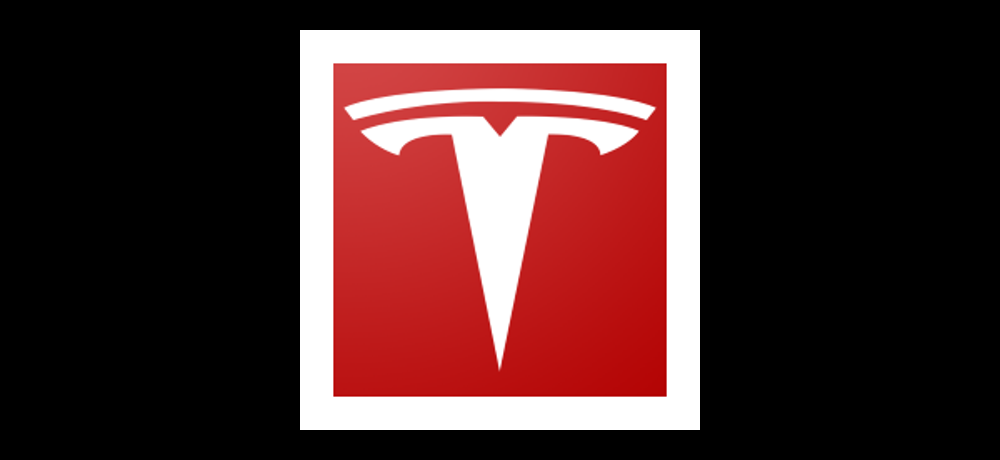Wearable Devices' patent enhances touchless gesture technology, enabling intuitive control for augmented reality and smart devices.
Quiver AI Summary
Wearable Devices Ltd., a tech company specializing in AI-powered touchless sensing wearables, announced that the United States Patent and Trademark Office has approved a patent for their neural gesture technology, which enables intuitive control of digital devices through gestures like pinch-to-zoom and volume adjustment in mid-air. This innovation addresses limitations of traditional gesture systems that struggle to define clear start and end points, often leading to cumbersome control methods. The patented technology is ideal for augmented reality headsets and smart devices, promising a natural user experience without the need for physical contact. Guy Wagner, the company’s President and Chief Scientist, emphasized that this advancement unlocks the potential for touchless control similar to touchscreen interactions. Wearable Devices aims to lead in the neural input category with their products, like the Mudra Band and Mudra Link, enhancing experiences across gaming, productivity, and extended reality markets.
Potential Positives
- The allowance of the continuation patent marks a significant advancement in Wearable Devices' neural gesture technology, enhancing its product offerings and competitive position in the market.
- This breakthrough technology supports intuitive control gestures, potentially improving user experience across various applications, including augmented reality (AR) and wearable devices.
- By setting the standard for neural input in the XR ecosystem, the company is well-positioned to capitalize on the growing demand for touchless technology and immersive experiences.
Potential Negatives
- The press release contains significant forward-looking statements, highlighting uncertainty in the company's future performance and reliance on market acceptance, which could raise concerns among investors about the viability of current projections.
- The company’s ability to successfully market its products and the acceptance by customers is uncertain, as indicated by the inclusion of this risk factor, which may impact investor confidence.
- There is a potential reliance on strategic partnerships and alliances, which could pose risks if such relationships do not yield the expected results or if the company fails to comply with applicable regulations.
FAQ
What recent patent was allowed for Wearable Devices?
The United States Patent and Trademark Office allowed a continuation of their patent for a “Gesture and Voice-Controlled Interface Device.”
How does the new technology improve gesture control?
This technology defines precise start and end points for gestures, enabling intuitive controls like pinch-to-zoom and volume adjustments.
What industries can benefit from this neural gesture technology?
This technology is ideal for augmented reality (AR) headsets, gesture-controlled devices, and wearable controllers.
What products does Wearable Devices offer?
Wearable Devices offers the Mudra Band and Mudra Link, enabling intuitive, touch-free control using neural input technology.
Where can I find more information about Wearable Devices?
For more information, visit their investor relations contact at [email protected] or check their Nasdaq listings WLDS and WLDSW.
Disclaimer: This is an AI-generated summary of a press release distributed by GlobeNewswire. The model used to summarize this release may make mistakes. See the full release here.
$WLDS Hedge Fund Activity
We have seen 1 institutional investors add shares of $WLDS stock to their portfolio, and 4 decrease their positions in their most recent quarter.
Here are some of the largest recent moves:
- ARMISTICE CAPITAL, LLC added 46,645 shares (+inf%) to their portfolio in Q1 2025, for an estimated $87,226
- CITADEL ADVISORS LLC removed 1,324 shares (-100.0%) from their portfolio in Q4 2024, for an estimated $11,545
- UBS GROUP AG removed 543 shares (-100.0%) from their portfolio in Q4 2024, for an estimated $1,183
- SUSQUEHANNA INTERNATIONAL GROUP, LLP removed 267 shares (-100.0%) from their portfolio in Q4 2024, for an estimated $2,328
- HRT FINANCIAL LP removed 159 shares (-100.0%) from their portfolio in Q4 2024, for an estimated $1,386
To track hedge funds' stock portfolios, check out Quiver Quantitative's institutional holdings dashboard.
Full Release
The newly allowed patent advances Wearable Devices' neural gesture technology, unlocking seamless pinch-to-zoom, volume control, and object manipulation in mid-air
Yokneam Illit, Israel, May 22, 2025 (GLOBE NEWSWIRE) -- Wearable Devices Ltd. (the “Company” or “Wearable Devices”) (Nasdaq: WLDS, WLDSW), a technology growth company specializing in artificial intelligence (“AI")-powered touchless sensing wearables, today announced that the United States Patent and Trademark Office has allowed a continuation of its patent titled “Gesture and Voice-Controlled Interface Device”.
Traditional gesture sensing systems continuously track hand and finger movements but lack clear "start" and "end" points, making it difficult for devices to understand when a user truly intends to zoom, adjust volume, or manipulate an object. As a result, unintuitive solutions have been used - such as requiring the use of both hands, adding special buttons, or abandoning continuous control altogether. The same goes for voice assistants, which require a “wake word”, prompting them to wait for further instructions.
Wearable Devices’ newly allowed patent defines a method to extract precise start and end points from continuous gestures. This breakthrough enables devices to support natural and intuitive control gestures like pinch-to-zoom not just for zooming images, but also for adjusting volume, resizing objects, or moving elements - seamlessly and touch-free.
The technology is ideally suited for augmented reality (“AR”) headsets, gesture-controlled smart devices, and wearable controllers based on cameras, Inertial Measurement Unit (IMU), or electromyography (EMG) sensors - making mid-air fine control finally accessible and natural.
"This patent unlocks the full potential of touchless control, allowing users to adjust digital environments as intuitively as they would on a touchscreen - but without ever needing to touch a device," said Guy Wagner, President and Chief Scientist at Wearable Devices.
About Wearable Devices
Wearable Devices Ltd. (Nasdaq: WLDS, WLDSW) is a growth company pioneering human-computer interaction through its AI-powered neural input touchless technology. Leveraging proprietary sensors, software, and advanced AI algorithms, the Company’s consumer products - the Mudra Band and Mudra Link - are defining the neural input category both for wrist-worn devices and for brain-computer interfaces. These products enable touch-free, intuitive control of digital devices using gestures across multiple operating systems.
Operating through a dual-channel model of direct-to-consumer sales and enterprise licensing and collaborations, Wearable Devices empowers consumers with stylish, functional wearables for enhanced experiences in gaming, productivity, and extended reality (“XR”). In the business sector, the Company provides enterprise partners with advanced input solutions for immersive and interactive environments, from AR/virtual reality (“VR”)/XR to smart environments.
By setting the standard for neural input in the XR ecosystem, Wearable Devices is shaping the future of seamless, natural user experiences across some of the world’s fastest-growing tech markets. Wearable Devices’ ordinary shares and warrants trade on the Nasdaq Capital Market under the symbols “WLDS” and “WLDSW,” respectively.
Forward-Looking Statements Disclaimer
This press release contains “forward-looking statements” within the meaning of Section 27A of the Securities Act of 1933, as amended, and Section 21E of the Securities Exchange Act of 1934, as amended, that are intended to be covered by the “safe harbor” created by those sections. Forward-looking statements, which are based on certain assumptions and describe our future plans, strategies and expectations, can generally be identified by the use of forward-looking terms such as “believe,” “expect,” “may,” “should,” “could,” “seek,” “intend,” “plan,” “goal,” “estimate,” “anticipate” or other comparable terms. For example, we are using forward-looking statements when we discuss the benefits and advantages of our products and technology, our aim to make neural input as intuitive and accessible as possible, and the potential of our touchless control technology in enabling devices to support natural and intuitive control gestures and allowing users to adjust digital environments. All statements other than statements of historical facts included in this press release regarding our strategies, prospects, financial condition, operations, costs, plans and objectives are forward-looking statements. Forward-looking statements are neither historical facts nor assurances of future performance. Instead, they are based only on our current beliefs, expectations and assumptions regarding the future of our business, future plans and strategies, projections, anticipated events and trends, the economy and other future conditions. Because forward-looking statements relate to the future, they are subject to inherent uncertainties, risks and changes in circumstances that are difficult to predict and many of which are outside of our control. Our actual results and financial condition may differ materially from those indicated in the forward-looking statements. Therefore, you should not rely on any of these forward-looking statements. Important factors that could cause our actual results and financial condition to differ materially from those indicated in the forward-looking statements include, among others, the following: the trading of our ordinary shares or warrants and the development of a liquid trading market; our ability to successfully market our products and services; the acceptance of our products and services by customers; our continued ability to pay operating costs and ability to meet demand for our products and services; the amount and nature of competition from other security and telecom products and services; the effects of changes in the cybersecurity and telecom markets; our ability to successfully develop new products and services; our success establishing and maintaining collaborative, strategic alliance agreements, licensing and supplier arrangements; our ability to comply with applicable regulations; and the other risks and uncertainties described in our annual report on Form 20-F for the year ended December 31, 2024, filed on March 20, 2025 and our other filings with the SEC. We undertake no obligation to publicly update any forward-looking statement, whether written or oral, that may be made from time to time, whether as a result of new information, future developments or otherwise.
Investor Relations Contact
Michal Efraty
[email protected]



